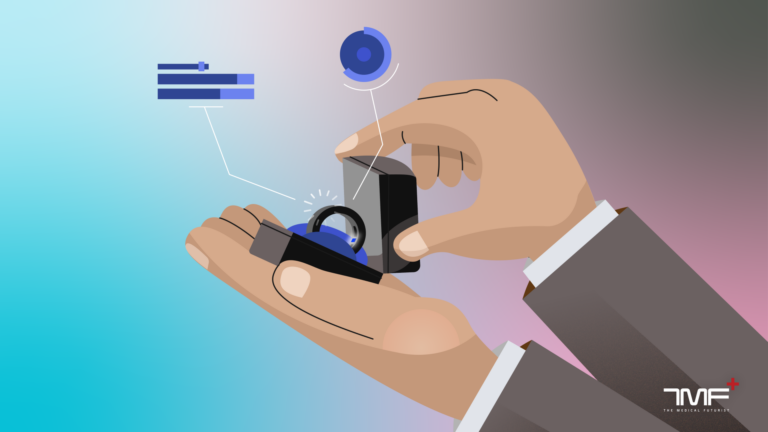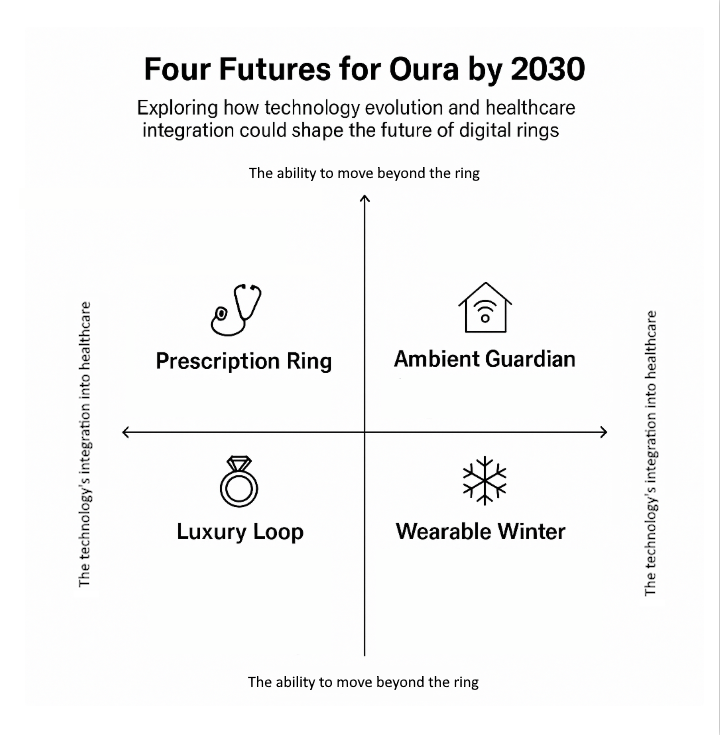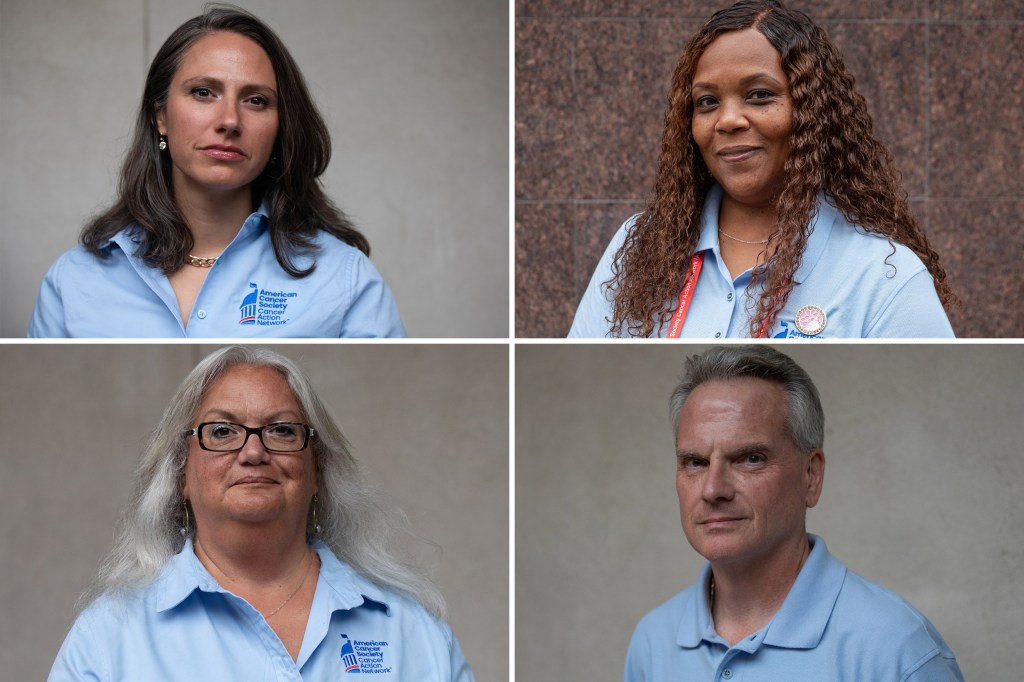The Medical Futurist – Read More
Recently, the company called Oura, which develops smart rings, just raised over $900 million in a new funding round, bringing the company’s valuation to $11 billion. For comparison, Fitbit at its peak was valued at around 10 billion in 2015, years before Google acquired it.
It made me wonder whether a company developing a digital health device is really worth that much. I have nothing against Oura, though. They have a great product and are backed by revenue and user growth. I simply don’t like wearing a ring. I thought it would be really interesting to analyze its possible future trajectories.

This is where scenario analysis, a well-established futures method, comes into the picture. It helps explore how different futures might unfold by systematically examining the interaction between key forces of change. It starts with defining the scope (the system or question under study) and the timeframe (how far into the future we want to look).
Next, we identify the main driving force that shapes this future, such as technological, social, economic, environmental, or political trends, and pinpoint the critical uncertainty, the factor that could plausibly evolve in multiple directions. By combining one major driver with one major uncertainty, we create a framework for building distinct scenarios that reveal how different pathways might emerge, helping decision-makers prepare for a range of possible futures rather than a single predicted outcome.
Using Scenario Analysis in Action
Therefore, to get a better picture of where Oura and other smart ring makers are heading, I worked out four scenarios for 2030. The driving force I chose was their ability to move beyond a ring, and the major uncertainty was their technology’s integration into healthcare. The driving force is important as it will define whether they can move beyond “just” being a smart ring developer and design services and features around that too. It reflects their technological evolution. While the uncertainty represents a risk about how that technology can play a role in healthcare. It also depends on healthcare’s openness to welcome such a technology.
Scenario 1: “Prescription Ring” (Radical evolution + High integration)
In this future, Oura transcends the wellness market to become a clinically validated medical device. The ring receives both FDA and EMA clearances for diagnosing and managing conditions such as sleep disorders, heart rhythm irregularities, and even early signs of anxiety or depression. Physicians prescribe it as a reimbursed digital therapeutic, seamlessly integrated into electronic health records and telemedicine systems. Patients and clinicians alike rely on the ring’s continuous data streams for personalized interventions, while healthcare systems embrace it as a cost-effective tool for preventive care and remote monitoring. The Oura Ring becomes as routine in medicine as a stethoscope once was.
Scenario 2: “Luxury Loop” (Slow evolution + Low integration)
Here, Oura remains a premium lifestyle brand, positioning itself as the “Rolex of wellness.” Innovation progresses steadily but conservatively—new materials, elegant designs, and AI-driven insights enhance the experience without changing the product’s essence. The ring continues to serve high-performing professionals, athletes, and wellness enthusiasts who view it as both a fashion statement and a personal feedback companion. Oura focuses on exclusivity, personalization, and community rather than clinical validation. In this world, the company thrives on brand aspiration, not healthcare regulation.
Scenario 3: “Ambient Guardian” (Radical evolution + Low integration)
In this future, Oura evolves beyond the ring itself. Its core technology becomes an ecosystem of ambient bio-sensing environments: smart textiles, furniture, and everyday devices that passively track vital signals to optimize sleep, focus, and emotional balance. Data remains outside the medical domain, used for well-being rather than clinical decisions. The user’s personal AI acts as a silent companion, continuously fine-tuning the environment such as adjusting light, temperature, or sound to promote optimal states. Healthcare systems may ignore it, but individuals experience a profound shift toward a lifestyle of continuous, invisible well-being optimization.
Scenario 4: “Wearable Winter” (Slow evolution + High integration)
A cautious regulatory climate and limited consumer appetite for radical innovation slow Oura’s transformation. The ring remains familiar in form but gains incremental medical capabilities—FDA clearance for sleep apnea and atrial fibrillation detection, for instance. Healthcare systems adopt it selectively within chronic disease management programs, reimbursing its use for specific conditions. Oura becomes a trusted, certified, and clinically conservative device: valued more for reliability and data integrity than for breakthrough innovation. It is the steady medical companion of a system that prizes safety over disruption.

No matter which scenario will get closer to reality by 2030, we can all start thinking about smart rings and their possible evolution through such analysis. Learn to do yours today with our book or course.
The post Four Scenarios For The Future of Smart Rings appeared first on The Medical Futurist.





